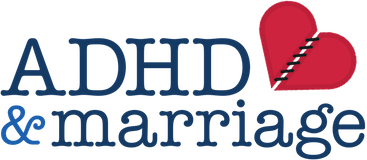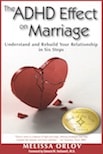What Is Parent-Child Dynamics in Couples?
The term "parent-child dynamics" refers to an unhealthy pattern in which one partner often takes on a controlling or managing role, while the other is more passive - being treated as though they are incapable, dependent, or immature. This dynamic can be more pronounced when ADHD is involved. The partner with ADHD may struggle with forgetfulness, disorganization, or inconsistent follow-through, which can leave the non-ADHD partner feeling burdened with an unequal share of responsibility.
Over time, this imbalance can lead to a cycle of resentment, with one partner feeling overworked (the parent role) and the other feeling managed and controlled (child role). This imbalance can lead to negative interactions that harm the relationship and erode mutual respect.
Recognizing the Parent-Child Dynamic
The first step to change is awareness. Recognizing these patterns can help both partners understand how they might be falling into roles that don’t serve the relationship. Here are a few signs to look out for:
- One partner feels overwhelmed by responsibility: The non-ADHD partner often steps in to complete tasks in what they see as a more efficient way, leading to resentment when they feel they are doing more than their fair share. For example, the non-ADHD partner might constantly remind the ADHD partner to do a specific task, and when it doesn’t get done, they either nag or do it themselves out of frustration, creating an unhealthy cycle. "It's easier to do it myself" is efficient in the short-term and can relieve anxiety, but does little to change the overall pattern for the better.
- The other partner feels nagged or micromanaged: The ADHD partner may feel constantly directed or corrected, leading to feelings of inadequacy or avoidance. They might say, "Don’t tell me what to do," or feel as if no matter how hard they try, it's never enough, which reinforces procrastination—an issue for many with ADHD.
- Routine reminders and instructions: If one partner regularly gives reminders about basic tasks like paying bills or childcare duties, it can signal a parent-child dynamic. For instance, one partner might repeatedly ask the other to check in with them, which can create tension as the partner in the ‘child-like’ role feels they are being monitored. Over time, this can erode trust and independence, making that partner feel as though they are constantly being scrutinized, leading to resentment and withdrawal.
- An imbalance in decision-making: The non-ADHD partner may feel they must control decision-making because they worry that without their oversight, important tasks might be forgotten or mishandled, leading to potential stress or chaos. This can result in them taking on a more dominant role in everything from childcare to planning vacations to managing finances, leaving the ADHD partner feeling sidelined and dis-empowered.
Recognizing these patterns doesn’t mean either partner is to blame. It’s simply a sign that the relationship could benefit from more balanced roles.
Moving Toward a Healthier Dynamic
Both partners contribute to the parent-child dynamic—often unknowingly—and both need to work together to break the cycle. Here are a few strategies to start moving toward a more equal partnership:
- Be curious: Be open and curious to understand how this dynamic negatively affects the relationship. Honest, non-blaming conversations about how each partner feels can go a long way. Talk about the areas where you feel out of balance and brainstorm ideas on how to change the current dynamics for something more positive for both partners.
- Divide tasks based on strengths: Instead of taking on all the tasks or micromanaging, try assigning responsibilities based on each partner’s strengths. For example, the ADHD partner may excel at creative or spontaneous tasks, while the non-ADHD partner might handle more detail-oriented duties.
- Practice patience and compassion: Changing these dynamics won’t happen overnight, and setbacks are normal. Both partners need to practice empathy—understanding that ADHD is not an excuse but a valid challenge that requires support and strategy.
- Set up external systems: Use reminders, apps, or shared calendars to help manage tasks. This way, responsibility doesn’t rely on one partner reminding the other—it’s a shared system that both can follow. If the ADHD partner feels they can't improve reliability on their own, it may be time to get professional assistance from a coach trained to work with ADHD adults
How a Professional ADHD Coach or Consultant Can Help
ADHD consulting can be incredibly helpful in these situations because it focuses on practical strategies to manage the challenges of ADHD in daily life. A consultant works with the ADHD partner to develop systems for better organization, time management, and follow-through. They can also help ADHD partners understand some of the specific emotions, such as overwhelm or dread, that get in the way of completing tasks. Consultants and coaches can also help the non-ADHD partner understand the neurodivergent brain better, traverse some of the difficult emotions that come with the Parent-Child Dynamic, and to set up boundaries to reduce parenting behaviors. Coaching provides both partners with tools to create more balance, share responsibilities more equally, and support each other with patience and compassion.
Remember, the parent-child dynamic is not about blame, but about patterns. Both partners have contributed to these patterns, and both have the power to shift them. With the right strategies, empathy, and support you can build a healthier, more balanced partnership.
This post was written by Jill Johnson, PCC, CPCC. Jill is a coach with the ADHD & Marriage Consulting team who works with individuals with and without ADHD, as well as couples. She also has her own coaching practice, Jill Johnson Coaching.
- MelissaOrlov's blog
- Log in or register to post comments




